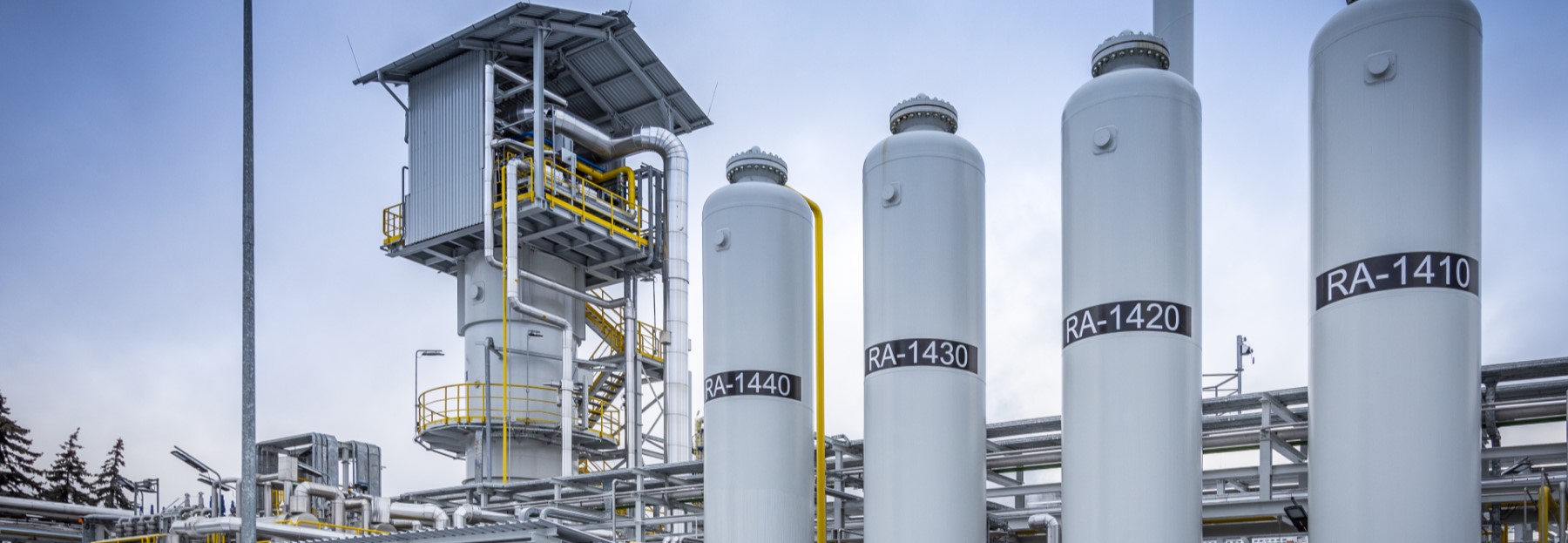| Scenario 1 | Scenario 2 | |
| Global warming limited to 2°C
assumption:
|
Global warming limited to 4°C
assumption:
|
|
|
Time horizon
The 2030 time horizon has been adopted for the purposes of the analysis, corresponding to the operational horizon of the ORLEN 2030 business strategy. The scope of the sensitivity analysis covered ORLEN’s entire value chain. |
||
| Transition |
The European Green Deal and CO2 pricing (EU ETS)
+ Faster than expected CO2 price growth as part of the EU ETS results in an additional decarbonisation pressure (expected prices of CO2 allowances: EUR 100/tonne by 2030). + Acceleration of ORLEN’s transition and green investment projects – higher CO2 prices improve the economics of such projects |
– The transition efforts are partial and uncoordinated. ORLEN loses its competitivness in core markets (fuel transport is replaced by new mobility, e.g. electric vehicles), while failing to build a position in new business areas.
– By failing to build resilience to climate change ORLEN may lose its competitivness. – Failure to anticipate or respond to changing consumer preferences may affect ORLEN’s growth. |
| Market and technological changes | The kery areas of technological change in response to changes in the market environment in the period to 2030 are:
Transport: Low-carbon fuels: alternative fuel station (hydrogen, EV, CNG and LNG) |
– Faster transition away from internal combustion engines in the EU will limit market demand for fuel products
– Uptake of electric vehicles in transport may undermine ORLEN’s share in the retail sector if it remains passive – Green energy, especially the offshore wind farms sector, means greater competition on the energy market in Poland |
| Reputation | Technological advances, consumer preferences and environmental concerns drive the transition. In response to these challenges, ORLEN will become a business leader of sustainable change in Central Europe. ORLEN will seek to achieve the following goals by 2030:
– leading player in Europe; – leader of energy transition in the region – provider of integrated customer services – socially responsible business; – stable source of value creation. |
Failure to comply with climate change management regulations, such as carbon pricing, may undermine the Company’s reputation, potentially giving rise to the risk of loss of reputation and revenues. Growing awareness may make customers and consumers look for lower carbon footprint substitutes for ORLEN products.
|
| Policy and the law | + It pays off to eliminate or significantly reduce environmental costs or emission charges relating to the EU ETSi. – The pace of development of new green technologies may not be as fast as assumed by the EU legislator, creating investment uncertainty
|
– Faster-than-anticipated pace of decarbonisation of refining and petrochemical assets, and in particular the costs and charges paid by the refining and petrochemical industries, will prevent ORLEN from generating sufficient revenues to be able to complete key transition projects and investments necessary to maximise opportunities in new business areas. |
| Physical risks | The probability of adverse consequences for ORLEN’s diversified business model is minimal. | Increased incidence of extreme weather events and changes in weather systems may cause disruptions across our value chain. Extreme weather conditions could also potentially affect ORLEN’s business and assets. |
|
Impact on the business model
The potential impact of climate change in terms of strategic and financial impacts in each of the scenarios has been assessed. Key exposures have been identified. |
||
| Earnings | Renewable energy sources and offshore wind projects are a source of stable returns for ORLEN. | EU ETS is a growing cost factor for ORLEN in the period until 2030. ORLEN is increasingly exposed to EU ETS costs in its core business models. |
| Operating costs | Risk:
– The pace of decarbonisation of refining and petrochemical assets, and in particular the costs and charges paid by the refining and petrochemical industries, will prevent ORLEN from generating sufficient revenues to be able to complete key transition projects and investments necessary to maximise opportunities in new business areas. – The pace of change expected by banks and EU regulators exceeds the capacity for technological change in Poland’s economy, e.g. in the transport sector, as fuel consumption in Poland is growing.
|
– Warming temperatures and extreme weather events increase the cost of energy needed to cool facilities and buildings.
– Increased OPEX spending on repairs of distribution network assets due to damage caused by extreme weather. |
| Changes to the business model | A strong multi-utility conglomerate with the refining operations balanced by new business streams. | The pace of business model transition is slower, but too rapid renewable capacity expansion without securing continuity of supply leads to overheating and transition recession, i.e. growth rather than a reduction of CO2 emissions. As demonstrated by the market today, higher CO2emissions translate into higher emission allowance prices, thus encouraging investment in renewables and discouraging investment in power generation based on fossil fuels, which is currently the only reliable security against supply disruptions. |
| Changes to the portfolio mix | By 2030, coal assets are phased out across the ORLEN Group, which significantly reduces ORLEN’s carbon footprint and EU ETS costs. This is accompanied by a surge in renewable generation capacities, especially offshore wind farms. | Coal assets are not phased out across the ORLEN Group, which gradually raises costs of operations. |
| Changes to the technology investment profile | ORLEN has developed an emission reduction curve that presents the emission reduction technologies required to achieve net zero emissions. The company’s progress in terms of the emissions reduction curve will depend on the CO2 price evolution in the EU ETS. Higher EU ETS price levels will trigger work on further projects. | |
|
Data used in the analysis
Both internal and external data was used in the scenario analysis. External data was used to understand climate risks and opportunities. It was sourced from the International Energy Internal data – we used internal historical greenhouse gas (GHG) emissions data for 2018–2019 and internal |
||
Climate changes risks
In 2020, the ORLEN Group commenced scenario analyses of the transition (regulatory) risks and physical climate change risks, taking into account the dual materiality perspective.
GRI Disclosures:
Capitals:

-
102-15
-
103-1
-
103-2
The analyses led to the initial identification of transition risks and physical risks in the short and long term. The activities will be continued in the next years.
Transition and technological change risks
A marginal abatement cost curve organises the logic behind transition risk management with respect to Scope 1 (direct emissions), Scope 2 (indirect emissions), and Scope 3 (value chain emissions).Depending on the decarbonisation costs, further technologies across the ORLEN value chain will be applied in the period to 2050. This makes it possible to plan R&D work on technologies that currently are not supported by any business rationale, and at the same time facilitates optimisation of the investment and development programme in the context of available emission reduction options along the value chain.
Transition risks
The ORLEN Group analyses new regulations resulting from the European Green Deal on an ongoing basis and adjusts its business models accordingly. The ambitious agenda of the ORLEN 2030 business strategy is designed to capture the opportunities created by Europe’s economic transformation which aims to meet the obligations under of the Paris Agreement and implement the UN Agenda 2030.
Transition risks related to the European Green Deal
Regulatory risks until 2030 broken down by PKN ORLEN's four business segments
Transition risks across the PKN ORLEN’s value chain
Climate transition and climate risks
Long-term physical climate risks and mitigation measures to be applied in the long term after 2030
The active approach of the ORLEN Group is contributing to mitigating adverse effects of climate change for the Group
| Climate risk | Expected impact | ORLEN Group’s mitigation measures |
|---|---|---|
|
Higher probability of local floods caused by rainfall irregularities. |
|
|
Potential reduction of water available for withdrawal from rivers and groundwater, combined with higher water demand. |
|
|
Impact on technological processes and employee productivity, higher water demand |
|
Information on the mitigation of risks associated with water and wastewater management is in the section `Water and wastewater management`.

